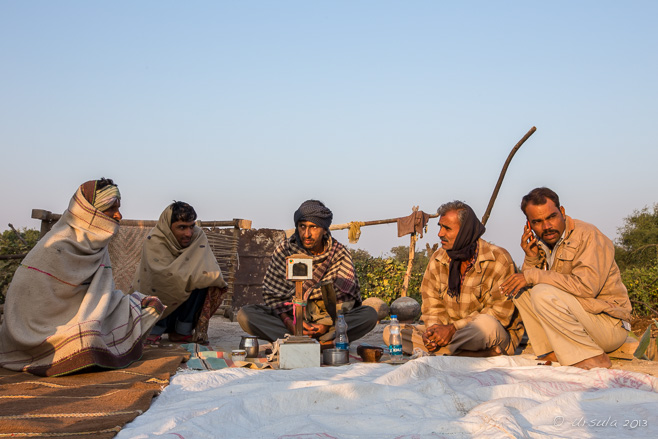
Men’s Morning Circle
It’s early morning. Bishnoi men, wrapped up against the cold, prepare their ritual opium tea.
There are countless deities in the Indian pantheon.
Sometimes it seems that the number of religions and cults is almost as high.
Scattered around the Western Thar Desert of India and Pakistan are villages of people calling themselves Bishnois. Followers of “Jambhaji”, as Guru Jambheshwar of Bikaner (b.1451) became known, these people are predominantly descended from Jat peasants and Rajput warriors from the north: Haryana, Punjab and Rajasthan.
The Bishnoi are known for their staunch environmentalism, and commemorate the martyrdom of the more than 360 people who died in 1730 trying to save the trees of Khejarli. Today, they mount strong protests against the killing of wild animals. They are strict vegetarians, and filter their water before boiling it to prevent any bugs being killed. They even bang their firewood before burning it to make sure any insects can escape.
The name “Bishnoi” comes from bis (twenty) and nai (nine), representing the 29 rules for living handed down from Guru Jambheshwar. It is ironic that rule 24 is to not use opium; on the tourist circuit, the Bishnoi are perhaps best known for their morning opium ceremony. For while opium is officially banned in India, it is not only used in Bishnoi villages, a drink made from it is freely offered to visitors.
I was travelling with a small group of photography enthusiasts, under the guidance of photographer Karl Grobl and local expert DV Singh. For the record, none of us tried the opium drink – though from what I have read, it is neither tasty, nor particularly potent.
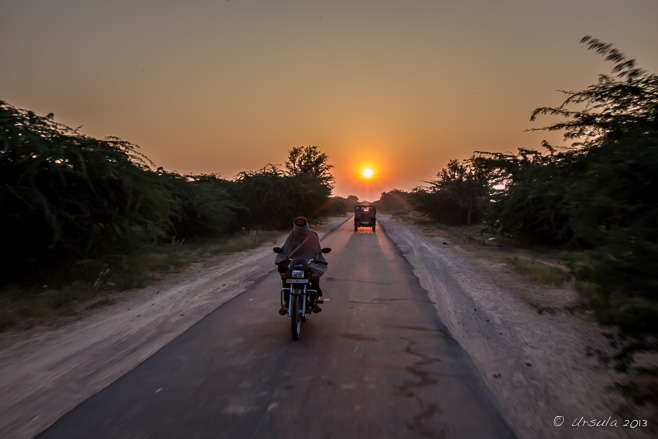
Motorcycle Sunrise
We started out early: the sun was low on the autumn horizon as we made our way to a Bishnoi village near Khejarla, Rajasthan.
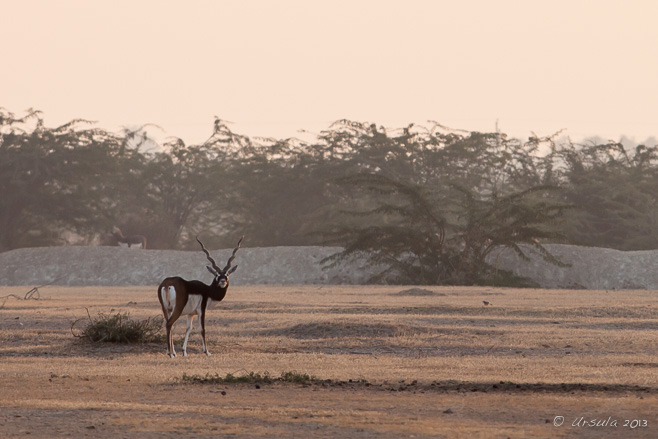
Blackbuck – Antilope Cervicapra
This is a dry region with sparse grazing; some people believe that the Bishnoi protection of all animals helps account for the larger numbers of deer and antelope in these Bishnoi-dominated areas.

Preparing Opium
A ball of dried opium (or a quantity of seeds) is pounded in a vessel and small amounts of water are added.

Pouring the Juice
The mixture, called amal, is then poured into a filter.

Drinking Opium
… and the thin liquid is drunk from cupped hands. The process was repeated a number of times, until each man had had his share.

Filtering Opium
The amal is filtered three times, prayers are said, …

Washing Dishes
I wandered off to see what the other villagers were doing. In the semi-open courtyard of one of the homes, a woman was washing cups.

Tending the Hearth
She tended the fire…

Pouring Chai
… and made chai …

Pouring Chai
… for the men to collect.

Bishnoi Woman

A Man and his Children

Bishnoi Man

Bishnoi Man
… and their chai. (Rule 25 is against tobacco.)

Pouring the Amal
The men continue to enjoy their opium and cigarettes, …

Old Bishnoi Woman
Away from where the men gather around their opium and chat, the early-morning activities continue.

School Children
Children in uniforms head to school…

Woman in Pink
… and a young woman heads inside after sweeping her porch.

The Wood Pile
Rule 10 requires that water, milk and firewood be filtered, so as to prevent damaging any living creatures when it is boiled or burned. Dried wood is collected for cooking fires: Bishnoi are not allowed to cut green trees.

Rolling out Chapati
In another house, a woman is making capātī – from the Hindi capānā, meaning ‘flatten, roll out’.

Patting Capātī
The unleavened bread is patted into an iron pan.

Sprinkling the Ghee
Ghī, clarified butter, gives the chapatis their flavour and keeps them from sticking to the pan.

Off to School
A young lad tucks his chapati – rolled in newspaper – into his school bag, and heads off.

Bishnoi Woman

A Place for Everything …
Possessions are few, but everything is clean and tidy – especially by comparison with much of India!

Young Mother and Village Well
The cows in the background are for milk; the Bishnoi eat no meat.

I was pleased to share the villagers’ morning – if not their opium! It was certainly an unusual experience.
Until next time,


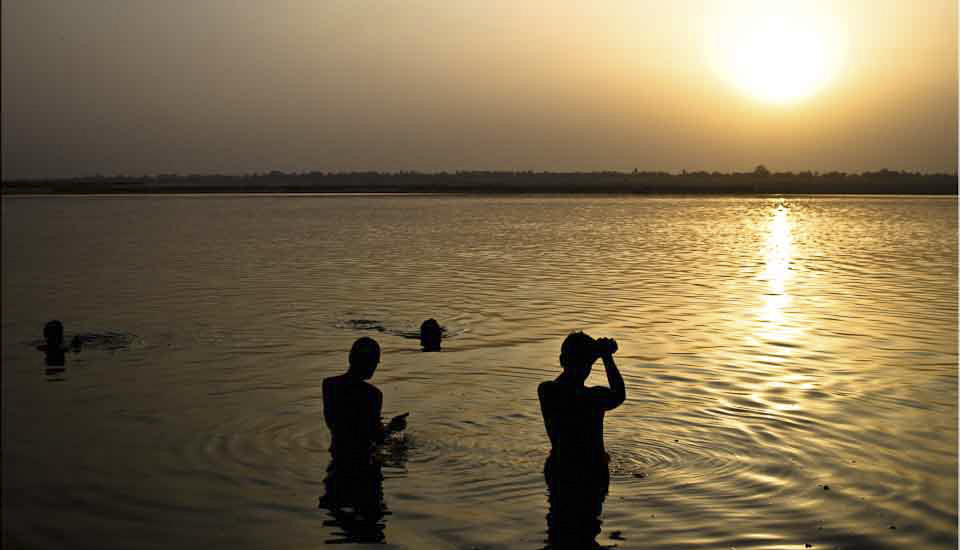



























.png)
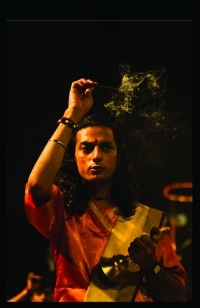

Thanks for inspiring us .
Thanku very much
Sagar bishnoi
You have a fascinating culture. Thanks for stopping by.
Cheers, Ursula
Thanks for describing about bishnoi people’s life . We are animal lover’s . Just follow 29 rules and maoe your life happy
Amazing photos. Do you know the name of this village, or can you put me in contact with the guide?
Thanks!
Contact Dv (Digvijay) Singh Jagat at India Exotica Travels Pvt Ltd – dv_jagat@yahoo.com
Tell him I sent you. 😀
Cheers, Ursula